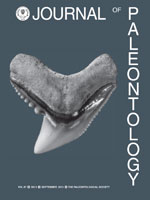A partial skeleton of a pelagornithid bird found in latest Oligocene or earliest Miocene marine strata in Oregon consists of a pelvis fragment, thoracic vertebrae, and leg bones of a single individual. It is the most completely preserved pelagornithid from the late Oligocene/early Miocene, and one of the few bony-toothed birds from this time period in general. The new fossil is from the Nye Mudstone and shows some previously unknown features that contribute to a better understanding of the osteology of pelagornithids. Because Paleogene and late Neogene pelagornithids differ in several osteological features and the temporally intermediate forms are poorly known, it further bridges a gap in our knowledge of character evolution in pelagornithids. The interrelationships within Pelagornithidae are still poorly resolved, but we detail that a clade of Neogene species, which the Oregon pelagornithid is not part of, can be supported by a derived morphology of the femur. To ease description of Neogene pelagornithids, we synonymize Palaeochenoides Shufeldt, 1916 and Tympanonesiotes Hopson, 1964 with Pelagornis Lartet, 1857, and suggest classification of all Neogene pelagornithids in the latter taxon.
How to translate text using browser tools
1 September 2013
Partial Skeleton of a Bony-Toothed Bird from the Late Oligocene/Early Miocene of Oregon (USA) and the Systematics of Neogene Pelagornithidae
Gerald Mayr,
James L. Goedert,
Samuel A. McLeod
ACCESS THE FULL ARTICLE

Journal of Paleontology
Vol. 87 • No. 5
September 2013
Vol. 87 • No. 5
September 2013




